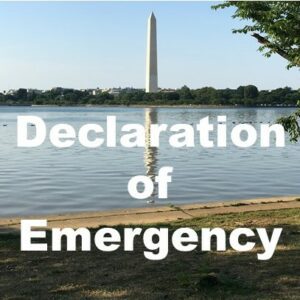All 50 states have now declared individual state emergencies and joined the President’s national emergency declaration of March 13, 2020. Government contracting in a crisis is not contracting as usual.
The federal government continues actively contracting, although new channels and processes have opened to expedite procurement of goods and services to not just address the pandemic, but to also keep the federal government functioning.
All major federal agencies have reached out to contractors on existing contracts to disseminate instructions regarding contract performance during the COVID-19 national emergency. To clarify any questions regarding existing in-progress contracts, one would email and call the contracting officer and/or contract specialist responsible for each current contract.
This blog will focus on what is changing to the resources available to find, pursue and win federal contracts. Note that all federal resources are always no-cost.
Registration During the Crisis
To work as a federal contractor, one must normally complete an official, no-cost registration in www.sam.gov where over 121,000 large and small businesses currently indicate disaster-related capabilities. Existing and new registrants indicate availability to provide products and services during any type of disaster in the Disaster Response Registry which is a subset of the SAM.gov registration. An Executive Office of the President (EOP) Memo 20-17 dated March 19, 2020 relaxed the SAM registration requirement through December 31, 2020, however, without a SAM registration, the Disaster Response Registry is unavailable.
Resources for Contracting
The M 20-17 EOP Memo also provides an extension of all contracts expiring before December 31, 2020 for up to a 12-month period, the ability to add costs not normally chargeable, and waives the procurement requirements contained in 2 CPR§ 200.319(b) regarding geographical preferences and 2 CPR§ 200.321 regarding contracting with small and minority businesses, and women’s business enterprises.
The beta.sam.gov federal website lists more than 70,700 active contracting opportunities with over 300 related to COVID-19 needs.
Pursuing Contracts
Due to the President’s national emergency declaration, small business-related emergency acquisition changes include a 15-day payment timeline for both prime and sub-contracts and increasing the micropurchase and simplified acquisition thresholds for applicable procurements. The micro purchase limit through credit or procurement cards has been raised from $10,000 to $20,000 for inside the U.S. purchases, and $30,000 outside of the U.S. The Simplified Acquisition Threshold during this time is increased from $250,000 to $750,000 for inside the U.S. purchases, and $1.5 million of outside of the U.S. purchases.
Winning
Due to the COVID-19 pandemic, demand for certain critical and essential supply items has increased to the point that many government contractors are unable to meet Federal demands with Trade Agreement Act (TAA) compliant products. To address this, the General Services Administration Senior Procurement Executive has issued an exception determination for temporarily allowing the procurement of non-TAA compliant products in SPE Memo SPE-2020-11.
Agencies are encouraged to contact the contractor(s) prior to placing orders to confirm availability.
Generally, government decision-makers will use current contracting vehicles and reach out to known contractors, and those with complete Disaster Response Registrations. As long as the nation operates under a declaration of a national emergency, the government will continue to adapt to expedite and accelerate government contracting during a crisis. For updated federal contracts information visit: https://www.acquisition.gov/coronavirus
Gloria Larkin is President and CEO of TargetGov, American Express Procurement Advisor and a national expert in business development in the government markets. Email glorialarkinTG@targetgov.com, visit www.targetgov.com or call toll-free 1-866-579-1346 x 325 for more information.

